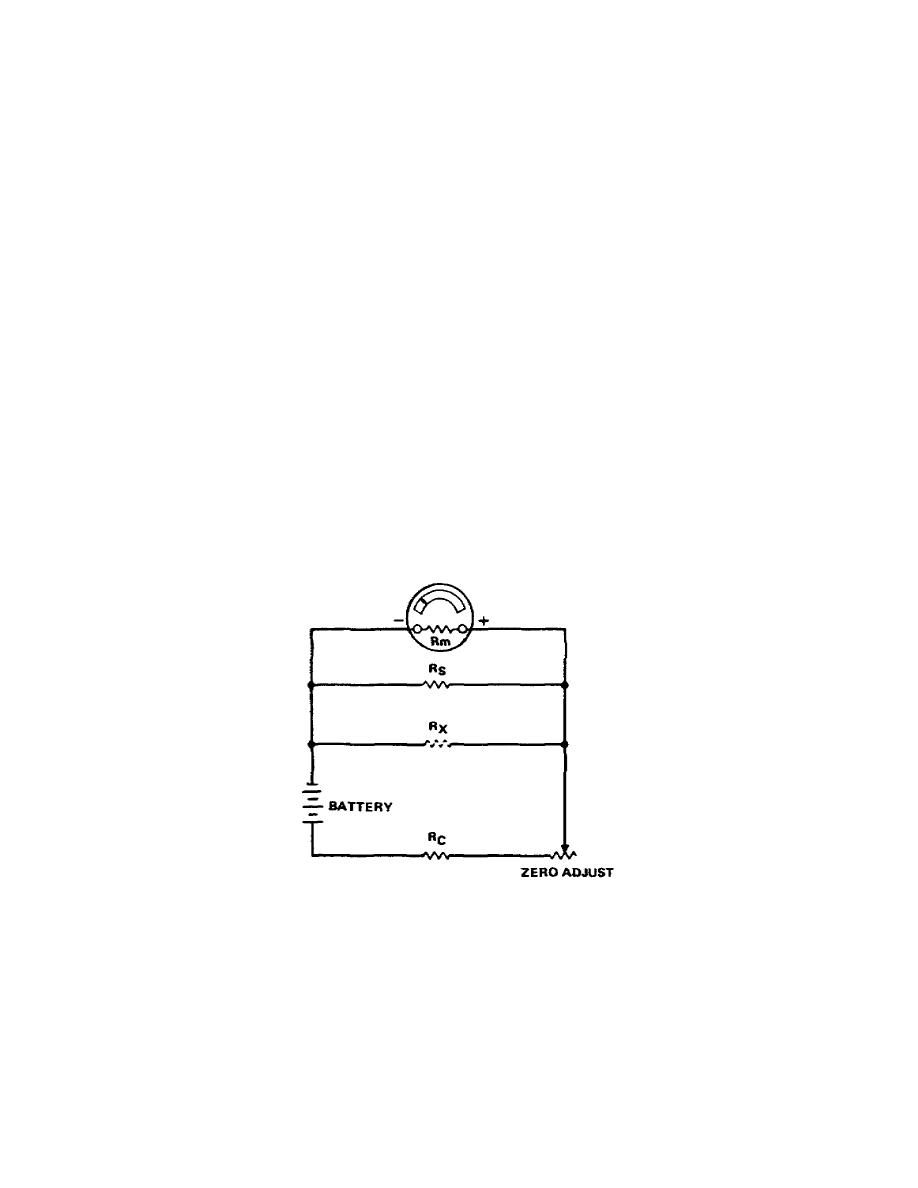
(2) Since the ohmmeter is calibrated at mid-scale, the mid-scale portion
represents the most accurate portion of the scale.
However, the usable range
extends, with reasonable accuracy, on the high end to 10 times the mid-scale
indication, and on the low end to 1/10th of the mid-scale indication.
(3) To extend the usable high range of the series-type ohmmeter, shunt Rs
(fig 1-8), can be removed from the circuit, and the value of the series-dropping
resistor Rc increased 10 times. This permits a mid-scale reading with a resistance
of 10 times Rx.
The limitations which prevent a further increase in the usable
high range of the ohmmeter are fixed voltage (battery) and the sensitivity (current
necessary for full-scale deflection) of the meter mechanism.
You can obtain a
higher range by increasing the battery voltage or by using a more sensitive meter
mechanism.
The former method is practical, and is used in some commercial test
equipment.
(4) You can extend the usable low range of the ohmmeter by installing meter
shunt Rs and decreasing Rc until the current in the circuit and the internal
resistance of the battery limit any further extension of the range.
Excessive
current can extend the low range by decreasing the battery voltage, but this method
is not feasible. Instead, a shunt-type ohmmeter is used.
d. The shunt-type ohmmeter (fig 1-10), measures low and medium values of
resistance.
The shunt-type ohmmeter scale is calibrated in the reverse direction
from the series type because full-scale deflection is obtained with test probes
open.
(1) Mid-scale deflection occurs when the combination of the
meter
resistance and the shunt Rs is equal to Rx, the resistance to be measured.
Figure 1-10.
A shunt ohmmeter
9



 Previous Page
Previous Page
